Selecting the best wood flooring design has the potential to enhance your home, imbuing any space with warmth and character. Given the wide array of options available, including hardwood, engineered wood, laminate, and reclaimed wood, the process of choosing the right style can become quite daunting.
This article examines the ideal wooden flooring design for various rooms while considering essential factors such as durability, aesthetics, and maintenance requirements. Explore innovative methods to integrate wood flooring that complements your home’s distinct style and discover the perfect flooring solution for your space.
Types of Wood Flooring Designs
Wood flooring represents a versatile and popular choice for homeowners seeking to enhance their interior design with natural materials. There exists a wide array of wood flooring designs that cater to diverse aesthetic preferences and functional requirements, underscoring the importance of exploring the various available options.
From traditional hardwood flooring to innovative engineered wood and cost-effective laminate flooring, the choices are extensive. Furthermore, reclaimed wood flooring imparts a distinctive charm, while premium designer wood options can significantly elevate the overall sophistication of any interior space.
A comprehensive understanding of these types is crucial for selecting the ideal flooring that aligns with both style and durability.
a. Hardwood Flooring Designs
Flooring design hardwood are esteemed for their timeless elegance and durability, rendering them a preferred option for both homeowners and designers. Solid wood varieties, such as oak and walnut, offer unique aesthetic appeal and long-lasting performance, seamlessly complementing a range of interior styles.
Among the various hardwood flooring styles, engineered wood stands out by combining layers of plywood with a hardwood veneer, thereby providing enhanced resilience in fluctuating humidity conditions. Finishes such as distressed or hand-scraped evoke a rustic charm while effectively concealing imperfections over time, thus enhancing their overall aesthetic quality.
Additionally, the wide plank design is increasingly popular, as it amplifies the sense of space within a room, fostering an inviting atmosphere, especially when using long lengths and wide boards.
Installation is a critical factor, requiring methods such as nail-down, glue-down, or floating; each method significantly impacts the floor’s appearance and longevity. Regular maintenance, including cleaning with appropriate wood-friendly products, is essential for extending the lifespan of the flooring.
Ultimately, the selection of the appropriate type of hardwood flooring contributes not only to the functionality of the space but also to its visual narrative, reflecting individual style, lifestyle, and floor aesthetics.
b. Engineered Wood Flooring Designs
Engineered wood flooring presents a contemporary alternative to traditional hardwood, effectively combining the aesthetic appeal of genuine wood with improved stability and moisture resistance. This innovative flooring solution is constructed with multiple layers, providing a durable option for a variety of environments.
One of the key advantages of engineered wood flooring is its versatility, making it suitable for a wide range of spaces, from busy family homes to sophisticated office settings. Current flooring trends underscore the aesthetic appeal and practicality of this decorative flooring choice, which seamlessly integrates into both modern and traditional interiors.
The installation methods for engineered wood flooring are also designed to be user-friendly, often allowing for floating floors that can be installed over existing surfaces. This feature significantly reduces renovation time and costs. Additionally, the option to select from a diverse range of finishes and textures enables homeowners to achieve their desired floor aesthetics without compromising on quality or performance.
- Durability for High Traffic Areas
- Enhanced Moisture Control
- Eco-Friendly Options Available
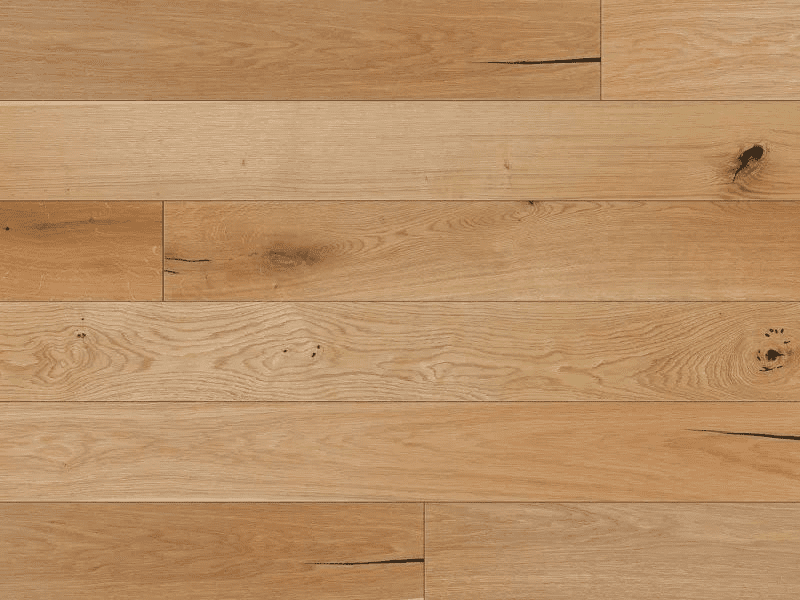
See product: Elka 12.5mm Real Wood Fawn Oak
c. Laminate Wood Flooring Designs
Laminate wood flooring designs have gained significant popularity due to their cost-effectiveness and durability, making them an excellent choice for areas with high foot traffic in residential settings. Laminate flooring effectively mimics the appearance of genuine wood while offering ease of maintenance and long-lasting performance.
Plus being affordable, laminate flooring presents a diverse range of design options that can complement various interior styles, from modern to traditional. Homeowners have the opportunity to choose from an extensive array of colours, textures, and patterns, enabling them to create personalised flooring solutions that align with their aesthetic preferences. The construction of laminate flooring consists of multiple layers, with the core providing stability and the top layer delivering a resilient finish that resists stains and scratches.
Key benefits of laminate flooring include:
- Easy Installation: Numerous laminate options incorporate a click-lock system, which streamlines the installation process.
- Versatility: This type of flooring can be utilised in a variety of settings, including kitchens, living rooms, and even light commercial spaces.
- Low Maintenance: Regular sweeping and occasional damp mopping are generally adequate to maintain the appearance of laminate flooring.
Cost considerations further contribute to the popularity of laminate flooring; in comparison to solid hardwood, laminate flooring is often available at a fraction of the price, making it accessible to a wider audience while still enhancing the overall aesthetic appeal of a space, particularly in home renovation projects.
d. Reclaimed Wood Flooring Designs
Reclaimed wood flooring designs exemplify the rustic charm of salvaged wood, presenting unique patterns and a narrative behind each plank. This environmentally sustainable choice not only enhances home improvement projects but also introduces a sense of warmth to any interior space.
Typically sourced from old barns, decommissioned factories, and even shipwrecks, reclaimed wood embodies a rich history, fostering a sense of timelessness within contemporary interior design, and is often featured in flooring guides for its unique attributes.
The inherent imperfections of reclaimed wood provide a character that newly sourced wood cannot replicate, ensuring that each piece is distinctive. Homeowners value the aesthetic appeal of flooring patterns that are both visually stimulating and rich in narrative.
This sustainable option aligns with eco-friendly practices, effectively reducing waste and minimising the demand for virgin lumber. To maintain the integrity of reclaimed wood, proper floor care is essential, preserving its beauty for generations while promoting a sustainable lifestyle.
Factors to Consider when Choosing a Wood Flooring Design
When selecting a flooring design wooden for a home or renovation project, several critical factors must be considered to ensure that the chosen option aligns with both aesthetic preferences and functional requirements. Aspects such as durability, style, maintenance needs, and overall cost should be thoroughly assessed to identify the most suitable flooring solution that enhances the space.
Each type of wooden flooring—whether solid wood, engineered wood, or laminate—has distinct characteristics that can greatly impact the decision-making process. Therefore, a comprehensive understanding of these factors enables homeowners to make informed choices, ensuring long-term satisfaction with their flooring investment.
1. Durability
Durability is a critical factor to consider when selecting wood flooring, as it significantly influences both longevity and performance across various environments. Engineered wood and laminate flooring options are specifically designed to endure high foot traffic, making them suitable for busy households.
Different materials demonstrate varying levels of durability and resilience, depending on their construction and finishing techniques. For example, solid hardwood is visually appealing but typically requires more maintenance to mitigate scratches and moisture damage. In contrast, alternatives such as vinyl and bamboo flooring not only offer substantial resistance to wear and tear but also contribute positively to the overall aesthetic of a space.
- Solid Hardwood: Requires regular maintenance and can be refinished.
- Engineered Wood: Exhibits greater resistance to humidity and temperature fluctuations, with lower maintenance requirements.
- Laminate: Highly durable, making it ideal for high-traffic areas; easy to clean.
- Bamboo: An eco-friendly option that is resistant to moisture and pests.
When evaluating durable flooring solutions, such as resilient flooring or hardwood alternatives, it is imperative to consider not only the initial costs but also the long-term maintenance and care requirements to ensure a wise investment.
2. Style and Aesthetics
The style and aesthetics of wood flooring, including traditional plank and patterned flooring, are integral to defining the overall ambience of a home. With a wide range of options available, from sleek modern designs to classic rustic finishes, wood flooring caters to various interior design preferences.
Regarded by many as a timeless choice, wood flooring not only enhances the beauty of a living space but also contributes to its warmth and charm. Homeowners frequently find themselves attracted to various styles, including:
- Contemporary Designs: Featuring clean lines and minimalistic aesthetics, these designs are ideally suited for modern homes.
- Rustic Finishes: Hand-scraped and weathered appearances evoke a sense of nostalgia, making them perfect for country-style or farmhouse motifs. Options such as oak tones and real wood add authenticity to the look.
- Classic Styles: Rich mahogany or oak options provide a sophisticated touch that seamlessly complements traditional decor.
Selecting the appropriate wood flooring, such as engineered boards and wooden flooring styles, can significantly influence decor choices, enhancing the overall style while ensuring comfort and durability.
3. Maintenance and Care
Proper maintenance and care are essential for preserving the beauty and longevity of wood flooring. Different types of flooring, including resilient flooring and luxury vinyl tiles (LVT), require varied maintenance routines. Solid wood typically necessitates refinishing, while laminate and engineered wood may require simpler cleaning methods.
To ensure that the flooring remains in optimal condition over time, it is crucial to adopt suitable practices tailored to the specific needs of each type. Wood flooring care is not a one-size-fits-all approach; therefore, understanding the unique wood characteristics and flooring characteristics of each material can significantly impact both performance and appearance.
- Solid Wood: Regularly apply wax or polish to maintain its shine, and consider refinishing every 5 to 7 years to restore its surface.
- Engineered Wood: Use a damp mop with a pH-neutral cleaner to prevent damage to the finish, and always follow up with a dry cloth.
- Laminate: Vacuum or sweep frequently to avoid scratches, and promptly clean spills using a soft, damp cloth.
By proactively addressing common issues such as scratches or water damage, homeowners can enhance the durability of their flooring, whether using moisture-resistant engineered wood or specially treated laminate, while enjoying its timeless appeal.
4. Cost
Cost is a critical factor in selecting the appropriate wood flooring, influencing not only the initial purchase price but also potential long-term maintenance expenses. While hardwood flooring offers premium quality, laminate and engineered wood present more cost-effective alternatives, such as cost-effective pine, that do not compromise on aesthetic appeal.
When assessing various flooring options, it is essential to consider how the characteristics of the flooring affect overall pricing. Factors such as the type of wood used (such as Pine, Oak, Larch, Teak, or Walnut), the finish applied, and the complexity of the installation can significantly impact costs.
For instance:
- Hardwood Flooring: This option is typically the most expensive due to its durability and aesthetic appeal. Environmental factors and the source of the timber may further elevate the price.
- Engineered Wood: This option provides a balance of quality and cost; it is generally less expensive than solid hardwood while still offering a solid wood veneer on the surface.
- Laminate Flooring: Typically the most budget-friendly choice, laminate mimics the appearance of wood but is composed of synthetic materials. Its lower installation and maintenance costs can make it a practical option for many homeowners. It is also ideal for high footfall areas due to its resilience.
Long-term maintenance is a vital consideration in the overall expenditure, as certain materials require more frequent repairs and refinishing.
Best Wood Flooring Designs for Different Rooms
Selecting the most suitable wood flooring designs for various rooms in a home can significantly enhance both functionality and aesthetic appeal. Each area, ranging from the sitting room to the kitchen, bedroom, and bathroom, has distinct requirements that inform the choice of flooring material and design.
For example, sitting rooms may be best served by luxurious hardwood options, while kitchens require moisture-resistant engineered wood, self-adhesive tiles, or laminate flooring to effectively manage spills and high foot traffic. A thorough understanding of these requirements ensures that the chosen flooring complements the specific needs and style of each room.
Living Room
The living room functions as the central hub of the home, making the selection of wood flooring a critical consideration for creating a warm and inviting atmosphere. Hardwood flooring is often preferred for its timeless aesthetic and ability to enhance the overall appearance of the space, while engineered wood provides both durability and versatility.
Choosing the appropriate style of flooring can significantly impact the overall ambiance and functionality of the room. For example, wide-plank hardwood can impart a rustic charm that complements traditional décor, whereas sleek, narrow boards can introduce a modern element to contemporary settings. Durability is also an essential factor, as certain flooring finishes, such as satin or matt, not only enhance visual appeal but also offer protection against scratches and general wear.
- Rustic finishes can add warmth and depth to the environment.
- Glossy surfaces can brighten the room, though they may require more extensive maintenance.
- Textured finishes can provide a distinctive appearance while improving traction.
By taking these factors into account, individuals can achieve a cohesive design that effectively enhances the living space. Engaging with flooring retailers can provide valuable insights into the latest flooring ideas and projects.
Kitchen
In the kitchen, wood flooring must be capable of withstanding spills and high foot traffic, making engineered wood and laminate flooring highly suitable options for this space. These alternatives offer moisture resistance while maintaining the aesthetic appeal of genuine wood, ensuring that the kitchen remains both functional and stylish. LVT provides an additional option with similar benefits.
When considering appropriate wood flooring for kitchens, it is essential to evaluate several flooring characteristics that enhance both performance and aesthetics. The flooring should provide:
- Ease of Maintenance: It is advisable to select flooring finishes that resist staining and are easy to clean, thereby minimising the effort required to maintain the flooring’s pristine appearance.
- Durability: It is important to opt for materials that can endure the wear associated with heavy appliances and foot traffic. High-quality laminate or engineered wood options typically feature a robust wear layer that protects against scuffs.
- Design Versatility: Choose styles, colours, and textures that complement the overall kitchen décor, allowing the flooring to enhance the space without overwhelming it.
By carefully selecting the appropriate wood flooring, homeowners can create a kitchen environment that is both aesthetically pleasing and practical.
Bedroom
For bedrooms, the selection of wood flooring typically leans towards hardwood options, which create a serene and inviting retreat.
With a variety of finishes available, hardwood flooring not only enhances the aesthetic appeal of the room but also provides warmth underfoot, contributing to a tranquil ambience. Different species of hardwood, such as oak, maple, and cherry, each possess unique characteristics that can influence the overall mood of the space. Exploring hardwood alternatives, such as Ted Todd options, can also offer unique touches.
For example, oak’s durability and classic appearance can seamlessly complement both traditional and contemporary designs, while maple offers a lighter hue that can brighten a room.
Additionally, the maintenance of hardwood floors is straightforward, often requiring only regular sweeping and occasional refinishing. Hardwood floors are resilient against allergens, making them a healthier choice for promoting restful sleep. They also contribute to excellent acoustics and temperature regulation, further emphasising their suitability for calming environments.
Ultimately, selecting the appropriate hardwood style can transform bedrooms into tranquil havens that promote relaxation and well-being.
Bathroom
In the context of bathrooms, the selection of wood flooring is of paramount importance due to the potential for moisture exposure. Therefore, moisture-resistant options such as engineered wood or specially treated laminate are highly recommended. These flooring types offer the aesthetic appeal of wood while ensuring durability and safety in a humid environment.
Choosing the appropriate wood flooring involves a careful evaluation of various factors to guarantee longevity and functionality. The following best practices should be considered:
- Moisture Resistance: It is advisable to select products with a high moisture resistance rating. Engineered wood is often a superior choice, as it is constructed in layers, which mitigates the effects of humidity. Using moisture resistant materials like LVT can also be beneficial.
- Safety Features: It is essential to ensure that the flooring possesses a non-slip surface to minimise the risk of accidents. Treatments that enhance traction can significantly improve safety.
- Design Compatibility: Consider how the flooring integrates with the existing decor. Lighter tones may create a sense of spaciousness, whereas darker hues can contribute warmth and intimacy. Wooden floors like Pine, Larch, and Teak can offer a variety of design options.
Regular flooring maintenance, including sealing and prompt clean-ups, is essential for preserving the quality of the flooring over time, ensuring that it remains both aesthetically pleasing and functional.
How to Incorporate Wood Flooring Designs in Your Home
Incorporating wood flooring designs within a residence can significantly enhance visual appeal and improve the overall aesthetic experience. By integrating various wood types, establishing patterns with wood planks, or incorporating borders and inlays, homeowners have the opportunity to personalise their spaces while maximising the beauty of natural materials.
Furthermore, combining wood flooring with other flooring materials facilitates creative design solutions that can accommodate individual preferences and functional requirements throughout the home.
Incorporating wood flooring designs within a residence can significantly enhance visual appeal and improve the overall aesthetic experience. By integrating various wood types, establishing patterns with wood planks, or incorporating borders and inlays, homeowners have the opportunity to personalise their spaces while maximising the beauty of natural materials.
Furthermore, combining wood flooring with other flooring materials facilitates creative design solutions that can accommodate individual preferences and functional requirements throughout the home.
1. Mixing and Matching Wood Types
Mixing and matching various types of wood can result in distinctive patterns that enhance the character of flooring. By pairing different finishes or species, such as Oak and Walnut, homeowners can achieve a visually striking effect that adds depth and interest to their living spaces. Brands like Ted Todd offer a range of options for such customisations.
To attain an aesthetically pleasing outcome, the following techniques should be considered:
- Colour Coordination: Aim for a harmonious palette by selecting wood species that share similar undertones. For example, combining warm-toned woods like cherry and mahogany can create a cosy atmosphere, while cooler tones such as ash and maple can impart a modern touch.
- Grain Pattern Considerations: The distinct grain patterns of various woods can significantly alter the visual impact of flooring. Smooth, straight-grained woods offer a sleek appearance, whereas woods with more pronounced, wavy grains can introduce an organic, rustic feel.
- Flooring Styles: The combination of different types of wood allows for the creation of innovative patterns, such as herringbone or chevron, which can enhance the overall design. These techniques enable an area to stand out while ensuring unity through coordinated finishes.
- Proportion Balance: It is essential to pay attention to the scale of the wood pieces. Utilising larger sections of one type alongside smaller sections of another can establish a balanced and intentional appearance.
By implementing these thoughtful strategies, homeowners can develop a flooring concept that reflects their personal style while celebrating the beauty of diverse wood varieties.
2. Creating Patterns with Wood Planks
Creating patterns with wood planks can significantly enhance the design of flooring, providing a dynamic and visually striking feature that captures attention. Options such as herringbone and chevron patterns introduce an element of sophistication and uniqueness to any space. For larger flooring projects, considering the pattern’s impact on flooring costs is essential.
The aesthetic appeal of these patterns transcends mere visual attraction, contributing to the overall ambience of a room. For instance, the crisp lines of a herringbone pattern can instil a sense of movement, making it particularly suitable for hallways or open areas. In contrast, the geometric precision of a chevron layout serves as an engaging focal point in living rooms or offices.
When considering flooring options, it is essential to evaluate the room’s accessibility and maintenance requirements. While intricate designs may necessitate additional cleaning efforts, they offer remarkable durability that endures over time. Proper flooring installation techniques also play a crucial role in maintaining these designs.
- Wood patterns are available in various finishes that can complement existing décor.
- Regular maintenance, including re-sealing and polishing, ensures these designs remain visually appealing.
- Incorporating different wood types can further enhance the visual intrigue.
In conclusion, adopting these patterned wood flooring techniques provides an opportunity for both creativity and practical advantages.
3. Adding Borders and Inlays
Incorporating borders and inlays into wood flooring can create an elegant and customised appearance, enhancing the overall design while highlighting craftsmanship. Decorative features, such as contrasting wood species or geometric shapes, can define spaces and contribute a luxurious touch.
One of the most effective methods for integrating these decorative elements is through meticulous planning and design. A diverse array of options exists, ranging from simple straight borders to intricate inlay patterns, providing a wide range of possibilities that align with individual preferences.
When considering styles, it is essential to take into account the following factors:
- Material Selection: The choice of wood species significantly impacts the visual appeal, with contrasting colours enhancing the overall aesthetic.
- Design Principles: It is important to strive for balance and proportion, ensuring that borders and inlays complement the main flooring without overwhelming it.
- Installation Techniques: Employing proper techniques is crucial for seamless integration, ensuring both durability and aesthetic appeal.
By effectively blending these elements, one can achieve exceptional decorative flooring designs that truly make a statement.
4. Combining with Other Flooring Materials
Combining wood flooring with other materials, such as laminate or luxury vinyl (LVT), can create a multifaceted design that enhances both versatility and functionality within a space. This approach enables homeowners to benefit from the aesthetic appeal of wood while also leveraging the advantages of different flooring types tailored to specific areas.
By integrating various flooring solutions, individuals can achieve not only a visually striking environment but also improved practicality across different zones of the home. For example, in moisture-prone areas such as kitchens and bathrooms, pairing wood with luxury vinyl provides durability and water resistance while maintaining a cohesive appearance that aligns with wood aesthetics.
Utilising contrasting designs, such as rustic wood in living areas complemented by sleek laminate in hallways, further enriches the overall ambience and flow of the space. Maintenance becomes more manageable, as each material can be selected based on its specific care requirements, ensuring long-lasting beauty and functionality. This approach allows for seamless integration of floorboards in various contexts.
- Design Flexibility: Offers endless options for creativity through diverse patterns and textures.
- Easy Maintenance: Selecting materials appropriate for their environment enhances longevity.
- Cost-Effectiveness: Implementing specific flooring types in optimal locations may prove to be more economical.
If you’re ready to upgrade your floors, look no further than TEKA Flooring. With a wide selection of premium wood flooring designs and expert fitting services, TEKA Flooring ensures your project is handled with precision and care.
Whether you’re renovating a single room or designing an entire home, our team is here to guide you every step of the way. Chat on Whatsapp to get our best price!
Read also:



